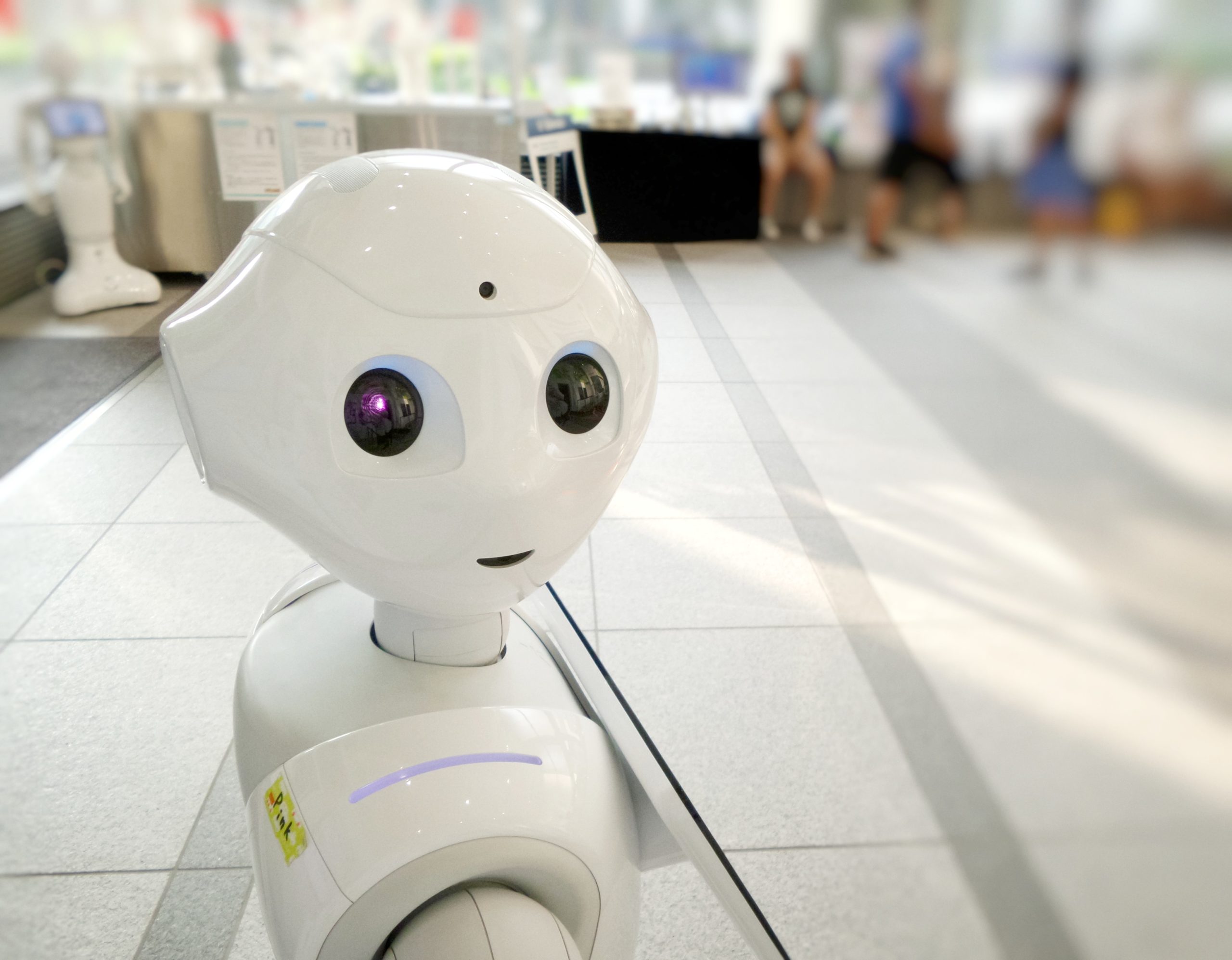Artificial Intelligence (AI) is technology that mimics human logic, habits and thought processes.
Once a futuristic idea, AI has been integrated into everyday technology such as recommendation engines on streaming video platforms, voice assistants in our homes and on our phones, a variety of robots, and enterprise software applications. Even many modern cars use AI in some form. In all, the goal of AI is to take what humans can already accomplish with their minds and apply technology to it for increased speed and precision.
Fortune Business Insights placed the market size of AI at $27.73 billion in 2019 and predicts it will grow to $266.92 billion by 2027.
History of Artificial Intelligence
In 1956, John McCarthy, famed computer scientist and then professor at Dartmouth College, together with several other scientists invented the term artificial intelligence for the Dartmouth Summer Research Project on Artificial Intelligence, a conference created to align the brightest minds on the potential of AI.
At the conference, scientists Allen Newell, Herbert Simon and John Clifford Shaw presented their program Logic Theorist, which was able to write mathematical proofs for theorems from the foundational mathematics work Principia Mathematica. Some of the program’s proofs turned out to be better solutions than had been originally written by mathematicians.
As time went on, AI programming made its way into other areas. While at the Massachusetts Institute of Technology in the mid-1960s, Professor Joseph Weizenbaum created the program ELIZA, which was capable of having a written conversation with humans by mimicking conversation styles. This can be viewed as the genesis of the computerized communication that is seen in modern AI applications, from chatbots to digital assistants.
Machine learning, a component technology of AI that teaches itself how to analyze and use data, has its roots in the same era. Arthur Samuel, another attendee of the Dartmouth conference, created the term machine learning in 1959 when writing about computers learning to play checkers. He had created a program that did just that not long before. Nearly 40 years later, in 1997, IBM’s Deep Blue computer beat world champion chess player Garry Kasparov.
In the 21st Century, AI applications have many practical uses.
How Artificial Intelligence Works
Artificial intelligence is designed to replicate cognition. The simplest AI uses a rules-based, reactive approach in which there are specific rules that guide the computer’s output, all of which are predefined and finite in scope. This approach consists of many if/then scenarios, coupled with a database of information that the computer can use to match inputs with appropriate outputs. Scaling this approach to massive levels is cumbersome, but rules-based AI applications can be useful in some cases.
On the other hand, AI that uses machine learning and deep learning is much more complex. In these scenarios, the AI program will take in data and look for patterns to learn from. Any decision it makes is based on all the past data it has ingested and all the past decisions it has made, much like a human would do.
This is how streaming platforms predict what someone may want to watch next, or how a navigation app suggests a destination based on how frequently and at what times a person visits specific locations.
Types of Artificial Intelligence
Strong AI
Also referred to as artificial general intelligence (AGI), strong AI represents future AI programs that are as functional as the human mind. At this point in time, strong AI is theoretical, but the theory suggests that artificial intelligence will become self-aware and able to learn over time like a human growing from a child to an adult.
Instead of relying on algorithms to mimic human cognition, a program will actually have its own consciousness. There are a variety of estimates as to when these capabilities will be realized — too many to present a definitive consensus — but generally speaking AGI is said to be several decades off, if possible at all.
Weak AI
Weak AI, also called narrow AI, attempts to mimic the human mind. These programs perform specific tasks and are governed by parameters put in place by their creators. Virtual assistants, self-driving cars, and game-playing computers all use artificial intelligence algorithms that are considered “weak.” Yes, they can be complex, as many of the prior mentioned technologies are, but they are limited in scope at the fundamental level of their programming.
Risks of AI
Because artificial intelligence is created by people, it is not perfect. Artificial intelligence will still make mistakes. If an AI application mistakenly tells a central air system to cool a home to 50 degrees, the effects are harmless in the end. But if a self-driving car or an AI-powered weapon makes the wrong decision, the effects could be deadly. Each time an industry places its trust in AI, it is taking on the risks associated with those programs making errors and must balance those against the risks of a human making the wrong decision in the same scenario.
Some observers also fear that AI applications will put humans out of work. This risk is more prevalent in some industries and with some specific tasks than with others. In certain businesses, an AI-powered chatbot or decision-maker may be able to do a human’s job perfectly fine, for example. But in others, such as healthcare or sensitive legal work, discussions with customers and clients may require more nuanced human interaction.
And yes, there will always be talk about AI becoming so powerful and self aware that it destroys the human race altogether, but for now that can be left to science fiction.
Benefits of AI
Artificial intelligence has been able to take over both monotonous and complex tasks from people, often executing them much faster. Whereas humans need to sleep and take time to enjoy life, AI programs can run day and night. They do the job of entering data, sorting documents, recording transactions and more. AI applications can also filter through numerous data points searching for correlations, analyze them, and offer insight in a relatively short time frame. And they are less prone to make mistakes that are attributed to human error, because they must follow their algorithmic instructions.
With AI innovation also comes practical applications, and the 21st century has seen AI become embedded in a variety of areas. Artificial intelligence algorithms are what give smart home devices the ability to automatically manage heating and cooling systems. They are also used in shipping to make the process as efficient as possible. In every industry, someone is using AI.
Although some AI programs go to work out front, like in a home, and others stay behind the scenes, like in shipping, they have saved numerous people time and money, and will continue to do so as they advance in the future.



